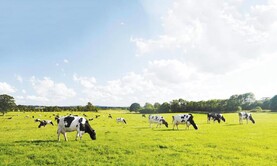The use of chlorine-based detergents for cleaning milk contact surfaces (milking machine and bulk talk) have been effective in maintaining plant hygiene – total bacterial count (TBC) and thermoduric count.
However, the potential for chlorine-associated residues (trichloromethane, or TCM, affecting butter quality and chlorate that could affect milk powder as an ingredient for infant formula manufacture) was recognised as a significant issue for dairy product markets and a research programme was initiated.
Following significant efforts by milk suppliers, advisory personnel, research and testing of milks, the target for TCM levels in butter has been achieved. Chlorate levels are also within specification.
But the long-term control of these residues is strongly linked to the widespread removal of chlorine-based detergents for cleaning.
In light of the importance of maintaining premium export markets for butter and dairy ingredients, new chlorine-free detergents have been developed for use in place of chlorine-based detergents.
However, there is a challenge associated with ensuring good microbiological quality of milk and low bacterial numbers are maintained.
A substantial body of work is now focused on (a) the availability of effective new products and (b) the correct use of these products on-farm to ensure good microbiological quality milk in the bulk tank. Different chlorine-free cleaning protocols for milking machines and bulk tanks have been developed and tested to meet the industry requirement to be chlorine-free.
The correct use of these protocols on-farm to ensure low TBC and thermoduric count is crucial. Research has shown hot water in sufficient supply is a key component of chlorine-free cleaning. A minimum of seven hot washes per week are required and the recommended detergent solution temperature is 75-80°C and 45-55°C at the start and end of circulation, respectively.
Research on commercial farms has shown a build-up of milk residue can occur on plants, particularly claw-piece internal surfaces.
This is generally related to insufficient hot washes, low detergent levels and frequency of acid washes. Steps to avoid such a build-up include re-calibrating the automatic detergent dosing systems. This is necessary to ensure correct uptake of detergent products, as uptake rates may be lower for products that do not contain chlorine.
All of these factors, individually, are vital and together, should ensure full compliance and premium quality milk, in terms of microbial (hygiene) and TCM/ chlorate residue levels.






 This is a subscriber-only article
This is a subscriber-only article











SHARING OPTIONS: